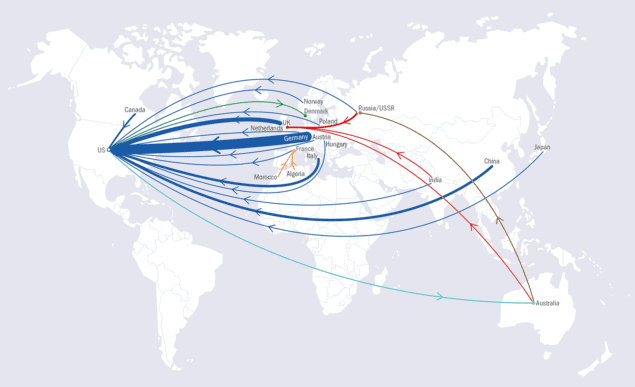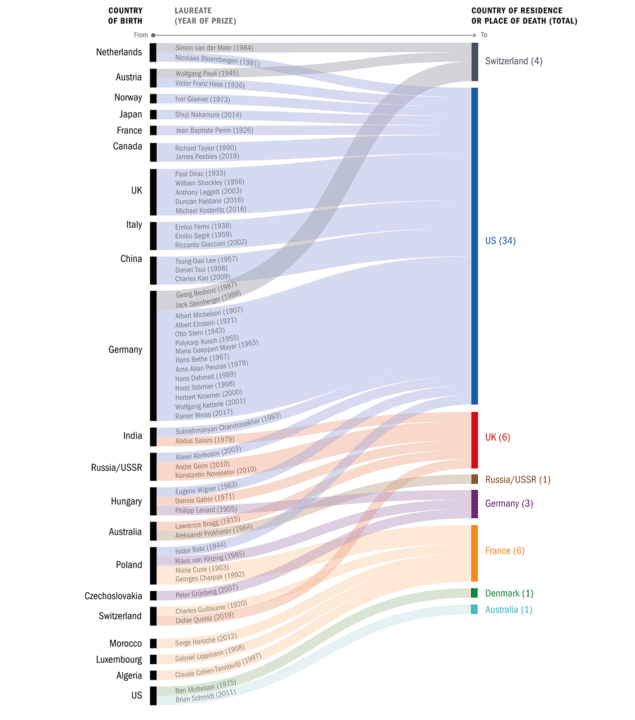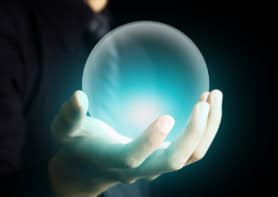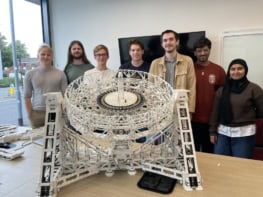
For me, one of the joys of working in physics is that it is a truly global affair. Many university physics departments, for example, have large numbers of people who were born abroad – from students to senior professors. I believe that this diversity is crucial to the success of these institutions, which seek to attract the best physicists from around the world. Also, people from elsewhere bring with them a broad range of experiences that can enhance how research is done. And from a personal point of view, I suspect many physicists enjoy meeting and working with scientists from different cultures.

It is no surprise, therefore, that many Nobel laureates are immigrants, as illustrated in these three infographics that we first produced in 2015 and have since updated. There are two maps that show the volume of international migration of physics Nobel laureates since the first prize was given – one showing the world outside of Europe and the other focussing on movements within Europe. The third is an “alluvial” infographic that provides more information about origins and destinations of individual laureates.
The biggest challenge in creating these infographics was deciding who is an immigrant. After much deliberation we came up with our own definition, which I admit is not perfect and may raise some hackles.
Our rather crude definition is that an immigrant laureate is someone who died or currently lives in a country other than that of their birth. Crucially, we are not interested in where a laureate did their award-winning work because we also want to include people who migrated after they bagged their prizes. We think that is important because some physicists made important scientific contributions in their adopted countries after they did their Nobel-winning work at home. An example is Enrico Fermi, who left his native Italy in the year he won his prize and went on to make important breakthroughs in nuclear physics in the US.

So, who are the most recent additions to our list of immigrant laureates? There were none last year, with Roger Penrose, Andrea Ghez and Reinhard Genzel all currently living in the countries where they were born. It was a different story in 2019, with Canada-born James Peebles living in the US and Switzerland-born Didier Queloz living in the UK.
That means that out of a total of 215 physics Nobel laureates, 56 are immigrants – at least by our definition – or a little over one quarter. I think you would be hard pressed to find such a high percentage of immigrants at the pinnacle of any field outside of the sciences – with the possible exception of professional football.
If you are interested in how we created these infographics, I wrote a comprehensive blog in 2019 that describes many of the issues we struggled with when deciding who is and isn’t an immigrant. These included shifting borders in Europe after the two world wars as well as the partition of India and other acts of decolonization.
The blog also digs deep into the data, looking at which countries are the big winners when it comes to Nobel laureate migration, which countries are the losers – and which countries have managed to break even.
Physics World‘s Nobel prize coverage is supported by Oxford Instruments Nanoscience, a leading supplier of research tools for the development of quantum technologies, advanced materials and nanoscale devices. Visit nanoscience.oxinst.com to find out more.




